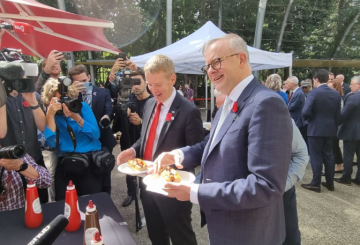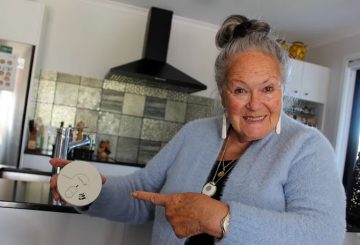Triển lãm Kiingi Tuheitia Portraiture Award sẽ diễn ra vào tháng 5 năm 2023. Các nhà tổ chức sự kiện nhằm mở rộng phạm vi chụp chân dung Māori và củng cố mối quan hệ giữa Kiingitanga và Waitangi.
Bảo tàng Te Kōngahu của Waitangi sẽ tổ chức triển lãm, nơi sẽ giới thiệu các tác phẩm của 43 người lọt vào chung kết Giải thưởng Chân dung Kiingi Tuheitia 2023. Cuộc thi quốc gia hai năm một lần này khuyến khích các nghệ sĩ Māori mới nổi tạo ra những bức chân dung tổ tiên của họ, được gọi là tūpuna.
Giải thưởng và triển lãm đóng vai trò là nền tảng để làm nổi bật kỹ năng và tài năng của các nghệ sĩ Maori vừa chớm nở này, những người sử dụng một loạt các phương tiện nghệ thuật thị giác. Giải thưởng Kiingi Tuheitia Portraiture lần đầu tiên được ra mắt vào tháng 8 năm 2020, với cuộc thi khai mạc và lễ trao giải diễn ra vào năm 2021.
Chanel Clarke, người đứng đầu bộ phận giám tuyển và học tập tại Waitangi Treaty Grounds, bày tỏ sự phấn khích của cô về việc tổ chức triển lãm lưu diễn, đặc biệt là sau chuyến thăm của nhà vua đến Waitangi hồi đầu năm nay.
Clarke lưu ý rằng triển lãm có nhiều loại nghệ thuật đa dạng, với nhiều nghệ sĩ vượt qua giới hạn của cách họ thể hiện tūpuna của họ. Một số tác phẩm thậm chí còn kết hợp các yếu tố kỹ thuật số, bao gồm cả một tác phẩm do AI tạo ra. Sự kết hợp giữa các hình thức nghệ thuật truyền thống và hiện đại này thể hiện những cơ hội thú vị dành cho các nghệ sĩ Māori ngày nay.
Theo Clarke, chân dung người Māori có thể có bất kỳ hình thức nào mà các nghệ sĩ Māori chọn, mà không bị giới hạn trong lý tưởng châu Âu. Cô nhấn mạnh rằng việc lựa chọn đại diện hoàn toàn phụ thuộc vào các nghệ sĩ. Các hình thức nghệ thuật truyền thống của người Maori như đất sét (uku) và chạm khắc (whakairo) cũng được bao gồm trong triển lãm.
Giải thưởng Kiingi Tuheitia Portraiture nhằm vào các nghệ sĩ mới nổi, nhiều người trong số họ đang tham gia lần thứ hai. Clarke nhấn mạnh rằng triển lãm mang đến một cơ hội quý giá cho các nghệ sĩ này để tạo dấu ấn và tiếp xúc.
Triển lãm Kiingi Tuheitia Portraiture Award sẽ được mở cửa cho công chúng tại Khu vực Hiệp ước Waitangi cho đến ngày 11 tháng 8 năm 2024.





























































